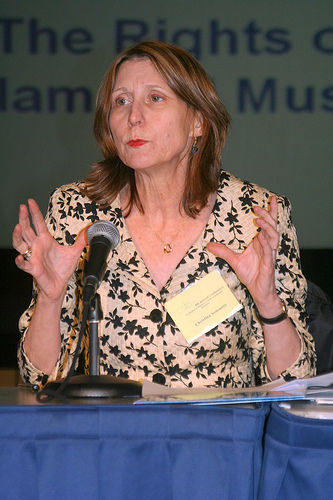Scholar: In Islamic Feminism, Both Liberals and Conservatives Play Essential Roles

In the struggle to accord women more rights in Islamic law and culture, who can play the most effective role? Christina Hoff Sommers, an American Enterprise Institute resident scholar speaking last Friday, pointed to the experience of American suffragettes to argue that while secular-minded liberal women couched the struggle in terms of appealing universal-rights language, it was the religious-minded conservatives who made the message stick among the masses. Sommers was speaking at a one-day conference, sponsored by the Washington D.C.-based Center for the Study of Islam and Democracy, which focused on the rights of women in Islam and Muslim societies.
Sommer’s argument: “Roughly speaking, there were two styles of feminism that flourished in the 19th and early 20th century in the
“Anthony and Stanton, inspired by Enlightenment ideals and the principles of equality enshrined in the Constitution, couched the women’s struggle in appeals to universal rights,” she said, yet they watched their movement fail to gain traction. “Their style of enlightened feminism was not able to galvanize sufficiently large majorities. Overall, it was — heartbreakingly to them — ineffective with women,” said Sommers.
How then did women win the vote in 1920?
“It was primarily due to a second group of feminist who were able to win the hearts and minds of average Americans, especially women,” said Sommers. Francis Willard “reached out to devoutly religious women who found feminism alienating or irrelevant, or a threat to their femininity or their place in the family. She practiced a form of Christian ijtihad,” using Scripture to support an active role for women, said Sommers.
“She had a genius for harnessing powerful conservative currents in the culture and directing them to progressive ends,” said Sommers.
A later generation of feminists, following in Willard’s path, “persuaded American women that voting and political engagement was their moral duty as women and mothers. They feminized the political domain,” she said.
“Most historians would agree: both groups were essential to women getting their rights. The Enlightenment feminists provided the leadership, the inspiration, the new ideals, and they were bold and aggressive — in some cases they would do crazy things. The conservative feminists found sources for those ideals in their own traditions. In the end it was they who galvanize an entire country to amend its Constitution,” she said.
ReligionWriter’s Take-Away for Journalists: While headline-grabbing but polarizing figures like Asra Nomani, Irshad Manji, and Ayan Hirsi Ali have struck rhetorical blows for women’s rights, it may be mainstream change-leaders like Ingrid Mattson and Azizah Al-Hibri who make those gains stick.
